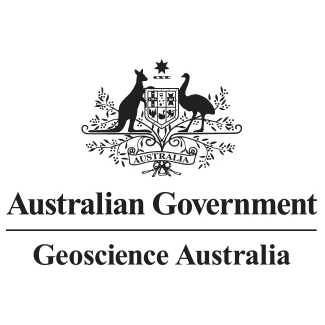Full description
Geoscience Australia and Monash University have produced a series of renewable energy capacity factor maps of Australia. Solar photovoltaic, concentrated solar power, wind (150 metre hub height) and hybrid wind and solar capacity factor maps are included in this dataset. All maps are available for download in geotiff format.Solar Photovoltaic capacity factor map
The minimum capacity factor is <10% and the maximum is 25%. The map is derived from Bureau of Meteorology (2020) data. The scientific colour map is sourced from Crameri (2018).
Concentrated Solar Power capacity factor map
The minimum capacity factor is 52% and the maximum is 62%. The map is derived from Bureau of Meteorology (2020) data. Minimum exposure cut-off values used are from International Renewable Energy Agency (2012) and Wang (2019). The scientific colour map is sourced from Crameri (2018).
Wind (150 m hub height) capacity factor map
The minimum capacity factor is <15% and the maximum is 42%. The map is derived from Global Modeling and Assimilation Office (2015) and DNV GL (2016) data. The scientific colour map is sourced from Crameri (2018).
Hybrid Wind and Solar capacity factor maps
Nine hybrid wind and solar maps are available, divided into 10% intervals of wind to solar ratio (eg. (wind 40% : solar 60%), (wind 50% : solar 50%), (wind 60% : solar 40%) etc.). The maps show the capacity factor available for electrolysis. Wind and solar plants might be oversized to increase the overall running time of the hydrogen plant allowing the investor to reduce electrolyser capital expenditures for the same amount of output. Calculations also include curtailment (or capping) of excess electricity when more electricity is generated than required to operate the electrolyser. The minimum and maximum capacity factors vary relative to a map’s specified wind to solar ratio. A wind to solar ratio of 50:50 produces the highest available capacity factor of 64%. The maps are derived from Global Modeling and Assimilation Office (2015), DNV GL (2016) and Bureau of Meteorology (2020) data. The scientific colour map is sourced from Crameri (2018).
See the ‘Downloads' tab for the full list of references.
Disclaimer
The capacity factor maps are derived from modelling output and not all locations are validated. Geoscience Australia does not guarantee the accuracy of the maps, data, and visualizations presented, and accepts no responsibility for any consequence of their use. Capacity factor values shown in the maps should not be relied upon in an absolute sense when making a commercial decision. Rather they should be strictly interpreted as indicative. Users are urged to exercise caution when using the information and data contained. If you have found an error in this dataset, please let us know by contacting [email protected].
This dataset is published with the permission of the CEO, Geoscience Australia.
Lineage
Maintenance and Update Frequency: asNeededNotes
PurposeThis dataset provides users open access to renewable energy capacity factor maps of Australia. The dataset is displayed as a web service in the hydrogen component of Geoscience Australia's Economic Fairways Mapper to compliment the renewable hydrogen economic modelling. The web service is also available at Geoscience Australia's, Australia's Hydrogen Opportunities tool (AusH2).
Issued: 10 03 2021
text: westlimit=112.00; southlimit=-44.00; eastlimit=154.00; northlimit=-9.00
text: uplimit=0; downlimit=0
User Contributed Tags
Login to tag this record with meaningful keywords to make it easier to discover
Download the geotiffs [9.6 MB]
uri :
https://d28rz98at9flks.cloudfront.net/145109/145109_00_0.zip![]()
Download the reference list (pdf) [603 KB]
uri :
https://d28rz98at9flks.cloudfront.net/145109/145109_01_0.pdf![]()
Renewable Energy Capacity Factor Maps WMS
uri :
http://services.ga.gov.au/gis/services/RenewableEnergyCapacityFactorMaps/MapServer/WMSServer![]()
Renewable Energy Capacity Factor Maps MapServer
uri :
http://services.ga.gov.au/gis/rest/services/RenewableEnergyCapacityFactorMaps/MapServer![]()
Renewable Energy Capacity Factor Maps WCS
uri :
https://services.ga.gov.au/gis/services/RenewableEnergyCapacityFactorMapsWCS/MapServer/WCSServer?![]()
Renewable Energy Capacity Factor Maps MapServer
local : 145174
Renewable Energy Capacity Factor Maps WMS
local : 145175
Renewable Energy Capacity Factor Maps WCS
local : 145280
- global : 0b2f1c73-0358-4ff0-9572-2d1ab5077566
- Local : pid.geoscience.gov.au/dataset/ga/145109


